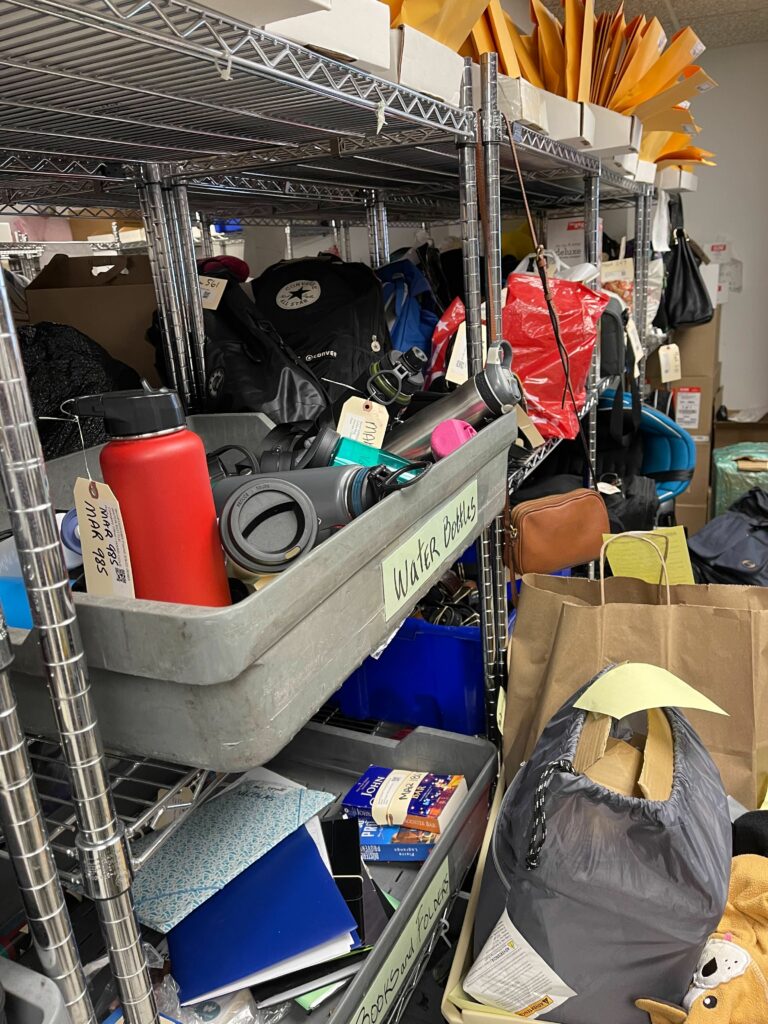I confess: before starting Boomerang, I didn’t know much about lost and found, other than people rarely get their lost items back, myself included.
My most frustrating (and emotional) lost item moment happened at an airport.
In my junior year of college, I was flying home for winter break and lost the most expensive item I owned in the TSA line: my Movado watch. While rushing to my gate, I realized I had left it in the TSA tray. I panicked, sprinted back to the TSA line, described the watch, and provided them with my information in case it surfaced. Despite following up several times over the next several weeks, another one bit the dust.
It’s all too common –– I’m sure many of you reading this have airport lost item horror stories, too.
A decade later, I’m here to shake up the industry for the better. Now being in the industry, it’s clear how and why I never saw that watch again. The very same reasons I didn’t find my watch 10 years ago are the same fundamental problems with airport lost and found management today.
I see the underpinning problems (and opportunities to solve with Boomerang) as follows:
Fragmentation: WHO has my lost item?!
The most frustrating part of losing something is that you just can’t remember where you lost it. In an airport, that then translates to tediously filling out 2-3 lost and found claims to cover all your bases just because of the jumbled way they’re set up today.
A major airport collects roughly 10,000 to 20,000 items in any given month. Whose hands your item falls in depends on where it was found as airports, different airlines, and TSA all manage their own independent lost and found operations.
Here’s the lay of the land:
- The lost items airports manage are found at the food courts, bathrooms, stores, in the front of the airport, and sometimes at the terminal gates.
- If an item is found on an aircraft or in an airline lounge, that airline manages those items.
- If an item is found at TSA, it’s most commonly managed by TSA. Though at some airports, I’ve seen TSA transfer the responsibility over to the airport to manage their items for them.
- All departments are using different technologies that don’t sync together –– a bird’s eye view of all items found at the airport doesn’t currently exist.
A Costly Operation for Counties to Fund:
Walk into a major airport’s lost and found operation, and you’ll see an army of 5 to 10 staff tagging, logging, storing, and packing items, and handling inbound customer phone calls and emails. Sometimes, it’s fully-fledged police officers doing these duties!
Staffing lost and found costs counties hundreds of thousands of dollars, even millions in some cases (especially those using police officers). But it’s not just staffing that costs them: it’s also the real estate associated with managing lost and found. In some airports, I’ve seen as large as 6,000 square foot spaces dedicated entirely to lost and found management.
A Lack of Airport Standardization:
Every airport has a different process: there’s not one easy, standardized method for travelers to follow.
At the Genève Airport in Switzerland, there are six different procedures travelers must fumble through, depending on where they lost their item.
At Chicago O’Hare International Airport, there are seven different procedures, each done through email, phone call, or a mix of both.
On the other hand, San Diego International Airport’s lost and found process looks much different, categorizing items by essentiality. There are a couple of problems with this. For one, on the airport’s website, there’s a 122-page-long public catalog of lost items, many described as broadly as “bag” or “laptop” (I’m sure you can imagine that doesn’t provide the most helpful reference point for finding lost valuables!).
Lost something? Sift through that messy catalog only to find that of over 1,200 lost items, only 23 were tagged with the location the item was found at. Combining that with the potential for someone else to take your item calls for a nightmare of an experience.
Boomerang is the Solution:
Boomerang’s here to consolidate it all as your one trusted management partner.
We’re here to solve the decades-long fragmented lost and found process. We’re here to relieve counties, so they can reallocate funds and resources elsewhere. We’re here to provide a seamless experience for travelers and turn lost and found into a customer touchpoint that wows them, instead of disappoints.
Let’s partner up and make it magical.

Skyler Logsdon
CEO, Boomerang

